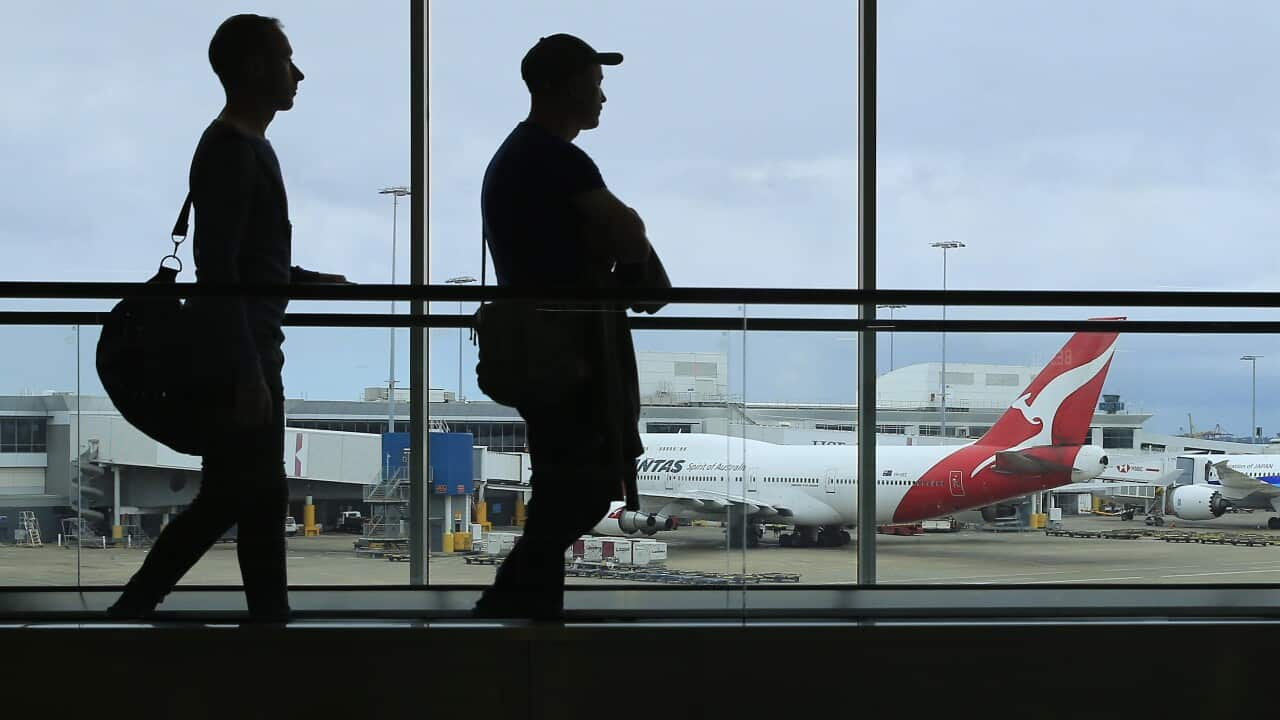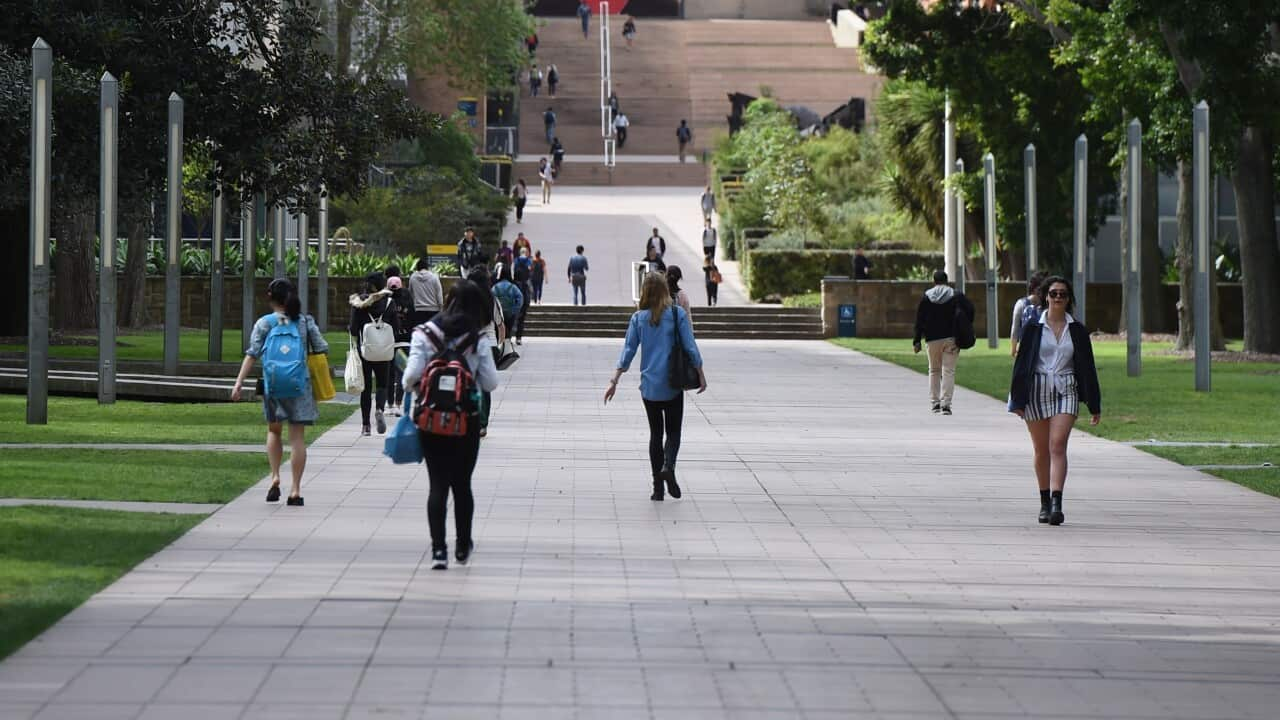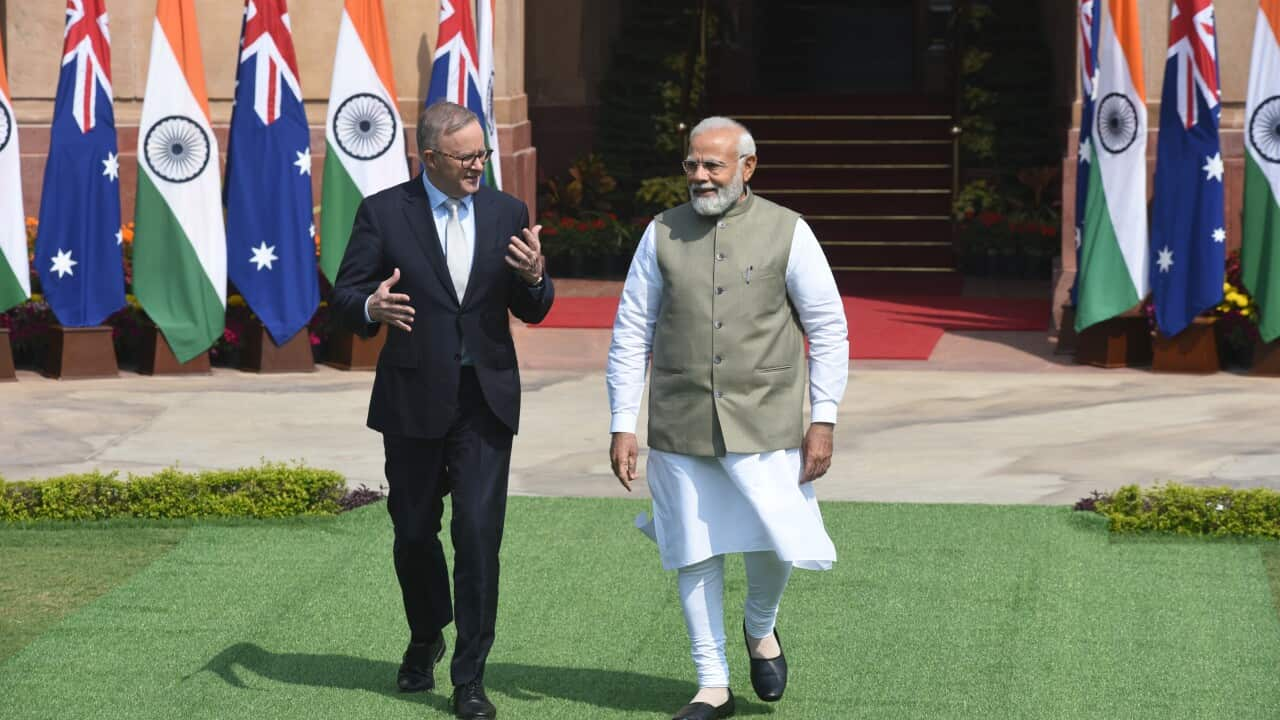Approval rates for Australian student visas have dropped to the lowest level in almost two decades.
In the six months to December 2023, 80.9 per cent of total student visa applications were granted — down from 86 per cent in 2022-23, 91.5 per cent in 2021-22 and 89.9 per cent before the pandemic in 2018-19.
This is the lowest rate since 2005-06.
Refusal rates differ across countries, with offshore higher education visa approvals from India and Nepal dropping from 74.2 and 65.2 per cent in 2022-23 to 60.8 and 47.8 per cent, respectively.
"We would have never gone to these sorts of levels before, in terms of approval rates — both in terms of percentage rates but also in terms of absolute numbers," said Abul Rizvi, a former deputy secretary of the immigration department.
"We have never refused so many absolute numbers of students, ever."
He said the drop in approvals was expected, as the government announced to curb net migration to pre-pandemic levels and bolster the integrity of the international education sector.
"They're focusing on students because students are the biggest contributor to net migration," Rizvi said.
A package of integrity measures was announced under the strategy to lift standards for international students and education providers, alongside and genuine student requirements.
How does the visa processing system work?
When it comes to visa processing, Rizvi explained the government uses a "risk-rating" system across all providers.
"A university in the top category of universities in Australia will tend to have a low-risk rating because most of the students they recruit tend to be found to be genuine students and have relatively little in terms of fraud rates," he said.
"Other providers tend to attract more students where issues such as fraud and non-compliance are more common, and as a result, they get a higher risk rating — which means their applications are scrutinised much more closely."
On 14 December, Home Affairs Minister Clare O'Neil signed a ministerial direction order for priority processing of student guardian (subclass 590) and offshore student (subclass 500) visa applications.
This means that students seeking an education at a low-risk institution will be prioritised.

Home Affairs Minister Clare O’Neil said in December that the Labor government's migration strategy was "about building back integrity into the system". Source: AAP / Mick Tsikas
"But it is just the time lag that will often make the difference as to whether the student is able to come and study in Australia or not," he said.
How many student visas have been granted?
According to Rizvi, the December 2023 figures show student visa application rates were still at record levels, with only grant rates having fallen.
"There has been an absolute boom in applications and what the government is trying to do now is get that under control," he said.
"In my view, that is unsustainable. You can't keep refusing such volumes of applicants using subjective criteria."
According to the latest available data from the Department of Home Affairs, 282,302 student visas were lodged in the six months to 31 December, including from on and offshore applicants. There were 131,878 higher education primary applications (from those proposing to study in Australia) and 65,470 for vocational education.
Of those, 195,934 student visas were granted, including 98,198 and 33,835 for primary higher and vocational education.
The grant rate for primary higher education visas dropped to 82.5 per cent — down from 87.5 per cent in 2022-23, 96 per cent in 2021-22 and 94.3 per cent in 2018-19.
University providers in the second and third "tiers" of risk rating are understood to be feeling the most impact.
An open letter co-signed by 16 vice-chancellors was reportedly sent to O'Neil and Education Minister Jason Clare to outline their concerns. SBS News has not seen the letter and has contacted Minister O'Neil's office for a response.
Students from which countries are the most impacted?
Honeywood said it was difficult to point to countries whose students have received most visa rejections.
He said recent drops in approval rates had disproportionately affected students from countries such as Pakistan and Nepal due to country-specific challenges running parallel with the broader changes under the migration strategy.
"However, we know traditionally which countries have had the tap turned off, or down, in the past," he said.
According to the latest data, 60.8 per cent of offshore higher education applications from Indian students were approved in the last six months — down from 74.2 per cent in 2022-23, 84.6 per cent in 2021-22 and 85 per cent in 2018-19.
Grant rates for offshore higher education students from Nepal dropped from 65.2 per cent in 2022-23 to 47.8 per cent in the last six months.
For Pakistani students, this fell from 66.3 to 62.6 per cent.
Meanwhile, the rate of Chinese university students being granted offshore higher education visas remained steady, around 97 per cent.
In New South Wales, the state with the most international students, China made up the largest country of origin, followed by Nepal and India, according to Honeywood.
Both India and China have populations of over 1.4 billion people, while Nepal's population of 27 million is close to that of Australia.
Australia has seen an influx of students from the Indian subcontinent, which includes Bangladesh, Bhutan, India, the Maldives, Nepal, Pakistan and Sri Lanka.
Honeywood said Vietnam and Malaysia are among other countries that have been impacted by the visa slowdown.
"I've also heard in recent weeks of quite a number of Chinese students who have also had visas if not refused but delayed — to the point they won’t be able to start semester one," he said.
A Department of Home Affairs spokesperson said Australia runs a "non-discriminatory" student visa program aimed at supporting education providers in delivering quality education to international students.
"Student visa applicants are assessed on their individual merits against the regulatory criteria prescribed in Australia's migration legislation, with a key requirement being that the applicant is a genuine student," they said.
The spokesperson attributed the decline in student visa grant rates to a focus on combating fraud and non-genuine applications from August last year, and preparing for the implementation of the ministerial direction for priority processing.
They also flagged a lower rate of student visa grants in relation to the number of decisions (which equals the number of grants plus refusals).
The spokesperson said that, since the re-opening of borders post-COVID, there had been a "notable increase" in attempts to obtain student visas using fraudulent documentation or information — and that the department refused any application where fraud was present.
Honeywood said he would like to see greater transparency in the international education sector, and a sense of "equilibrium restored".
“By all means, level one risk providers might get priority, but that doesn't mean the tap is turned off, or turned down too dramatically when it comes to visa approvals for other providers," he said.













